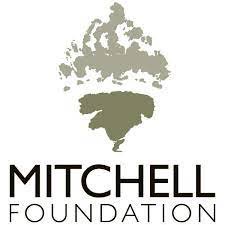Decoding Drinking Water in Texas:
The Texas Community Water System Prioritization Tool
We built a tool to help understand the durability of—and prioritize future investments in—water systems across East Texas. This interactive, web-based application displays rich drinking water data that policymakers, advocates, non-profits, and technical assistance providers can use to improve drinking water quality and access for Texans. Given the complex nature of drinking water infrastructure, we designed this tool to collate publicly available data across fragmented federal, state, and non-profit sources in order to paint a fuller picture of water systems - making it easier to understand the potential risks and challenges facing water systems in Texas.
-
Access to safe, affordable drinking water in many parts of the United States feels like a promise made but not kept. Growing concern among community members, policymakers and experts over the quality and cost of drinking water is increasingly clear in recent years—but barriers to better outcomes range from hyper-local issues to an array of systemic problems. Challenges are particularly acute in Texas, where drinking water and wastewater infrastructure consistently receives low marks among the nation’s lowest quality for drinking and waste water. One major barrier to reversing those trends across communities is the accessibility and use of data about water. Data on water use and quality exist, but are often housed in siloed platforms and organizations (e.g., in agencies, non-profits, or companies), and rarely distilled to the utilities themselves—a fact that largely renders data inaccessible for decision-makers and advocates alike. That’s why—with support from the T.L.L. Temple and Mitchell Foundations—EPIC built this first-of-its-kind tool.
-
This first vignette serves as a basic user guide for the tool, offering an overview of features, FAQs, and other information for users. It also includes links to further resources provided below.
-
Harmonizing datasets related to drinking water affordability and quality from across East Texas, our tool compiles public data from 30+ key datasets to “measure” a water system’s durability given a host of environmental, governmental, and social factors. Such factors may include water quality, affordability, or security, among others—but all interact in complex ways that make up a water system’s quality of service, and equitable distribution of resources.
Users of this tool can identify and evaluate trends in drinking water in terms of those durability factors, and find utilities based on a set of user-determined characteristics. Ultimately, we see the data and mapping features built into this tool supporting the critical work of decision-makers in government, advocates, service providers, and communities working to improve drinking water—and we hope future iterations will be an asset for improving investment decisions in technical assistance, project funding, stakeholder education, and more.
-
This second vignette provides technical guidance and information for tool users looking to go beyond basic features of the application to perform deeper analysis and targeted research. It walks users through downloading the data into Google Sheets, R, and QGIS for continued analysis.
Technical Resources and More on this Tool
-
This document provides users with a host of methodological considerations and assumptions made during development of the tool. It also includes a data dictionary and an appendix of datasets, variables, vintage, and descriptions.
-
This Github repository contains the code for our tool.
-
This Github data collection repository contains code for downloading, organizing, and analyzing data for this project. Data organized from this repository feed into the tool.
-
This public log is used for synthesizing public feedback on this tool, and for logging improvements. As feedback is added, we’ll include items on the Ticket List for the next iteration of the application.
-
This confidential feedback survey is a way for users to tell us where they see needed improvements to this tool. We plan to do multiple rounds of updates in the months ahead and deeply appreciate users taking the time to fill out this survey.
Do you have questions, comments, or concerns with the data or features in this tool?Interested in learning more about, or supporting, this work? We want to hear from you!
We gratefully acknowledge the support of our philanthropic partners for this work.



